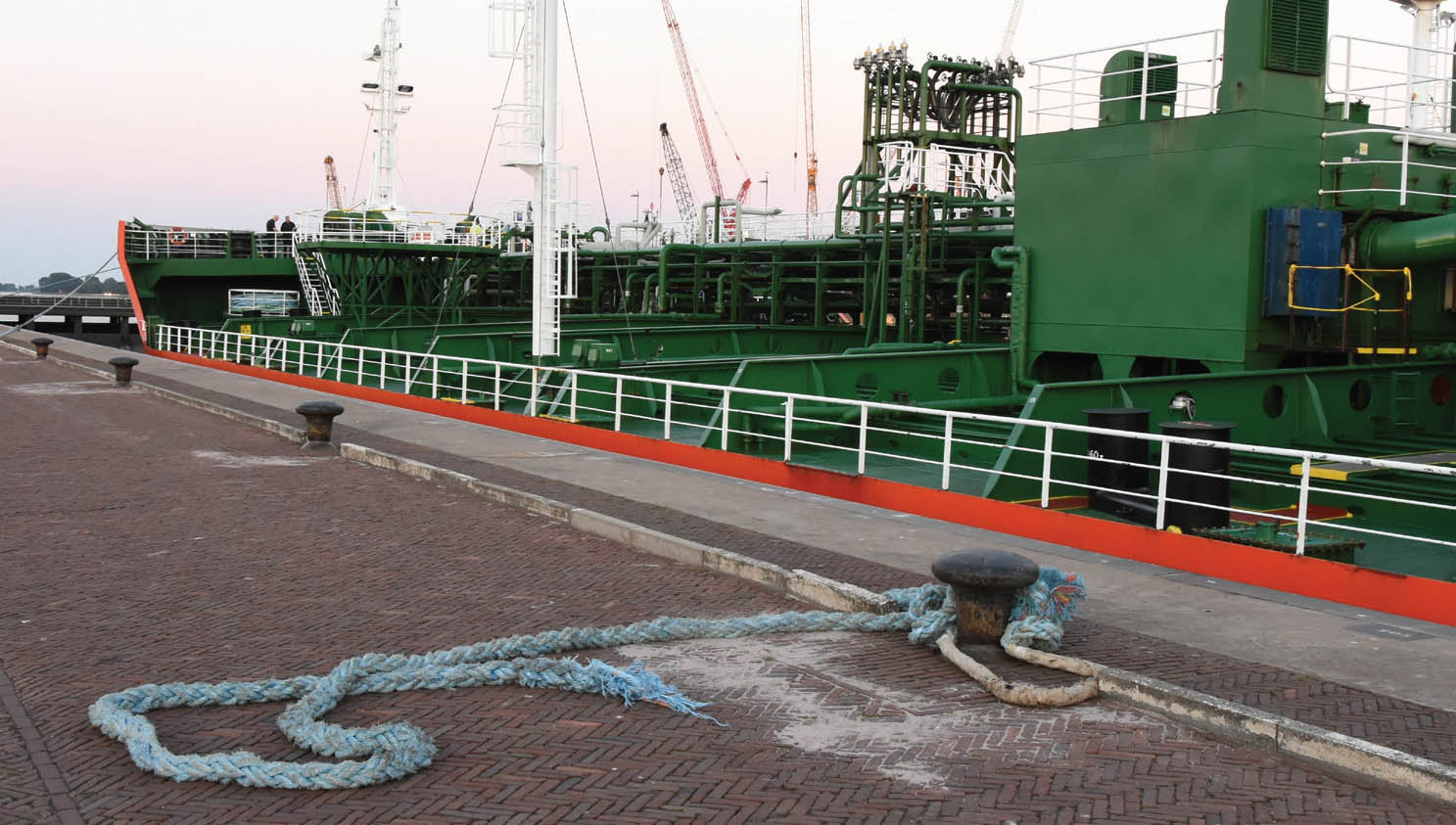
Dutch accident investigators have called for a radical 'turnaround in thinking' to reduce the risks of working with mooring lines.
The call comes in a report on an incident in June 2018 when a seafarer onboard a chemical tanker was killed after a spring line parted as the ship was entering a lock at IJmuiden.
Investigators said the bridge team and the pilot onboard the Cyprus-flagged RN Privodino had lacked a common understanding of the vessel's final mooring position within the lock. The forward spring line had been placed around a bollard as soon as it came ashore, even though the 30,720dwt tanker was still 37m away from the centre of the lock. It parted under tension, striking the motorman who was in the snap-back zone, killing him instantly.
The Dutch Safety Board investigation revealed that the mooring team leader on the foredeck was unable to monitor the operation of the mooring line winch and was unable to see the motorman. There was no one position from which he would have been able to simultaneously maintain an overview of the mooring operation, monitor the mooring team members and supervise safety.
Investigators warned that it was also difficult for seafarers to determine which positions were safe at any given moment as the danger areas on the deck changed depending on which mooring line was used and how it was guided over the deck. The entire foredeck on RN Privodino was designated a snap-back zone and the marking did not indicate the location of these zones in specific mooring configurations.
The report calls for Netherlands Maritime Technology (NMT) and the Royal Association of Netherlands Ship Owners (KVNR) to investigate ways to ensure that seafarers only work from safe positions when mooring lines are being handled.
It recommends that the ship's managers, SCF Management Services of Dubai, identify or create safe workstations where crew cannot be hit by mooring lines and ropes if they snap back, and organise work processes in such a way that operations are always undertaken from these points.
The investigation also discovered that a mooring line breaks on an almost weekly basis in the locks at IJmuiden and these are usually the forward springs.
The report recommends that the Central Nautical Management North Sea Canal area develops an ambitious target aimed at drastically reducing the number of broken mooring lines in the locks.
Tags
More articles
'Shocking' work and rest hours study to be raised at Paris MOU taskforce
Publication of an explosive new report into systemic failures in recording hours of work and rest could be the catalyst to resolve long-standing issues around the regulations, participants at a global webinar agreed.
Safety concerns raised by crew on Solent Towage vessels over workplace exposure at Fawley
Nautilus has ramped up health and safety investigations on behalf of 40 seafarers who work and sleep on tugboats moored close to an Esso gas vent pipe at the Fawley refinery in Southampton.
Members reject Boskalis Marine Services pay and pensions offers
Nautilus has gone back to the negotiating table with Boskalis Marine Services (ex-Smit MoD) after members voted to reject the company's two pay and pensions offers.
